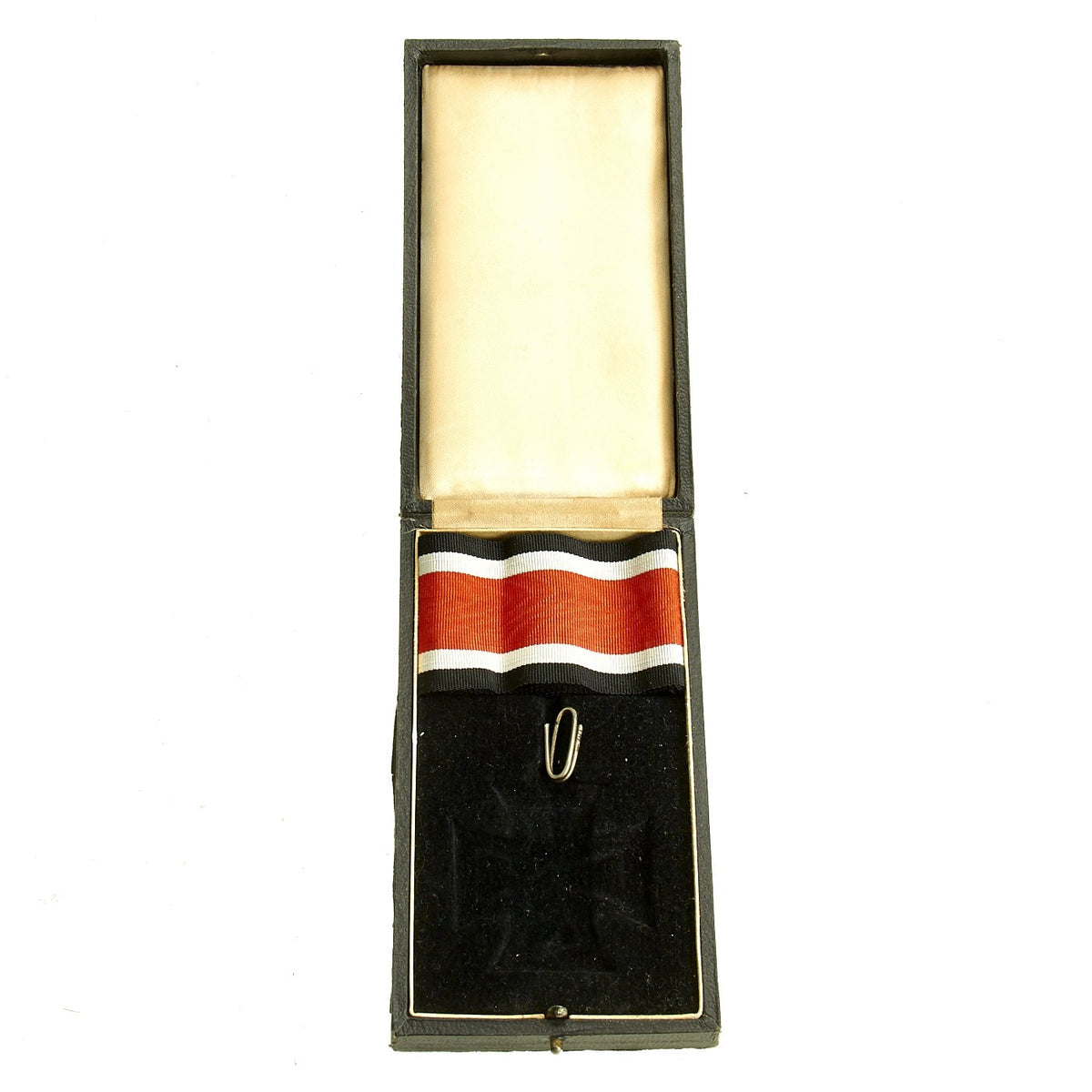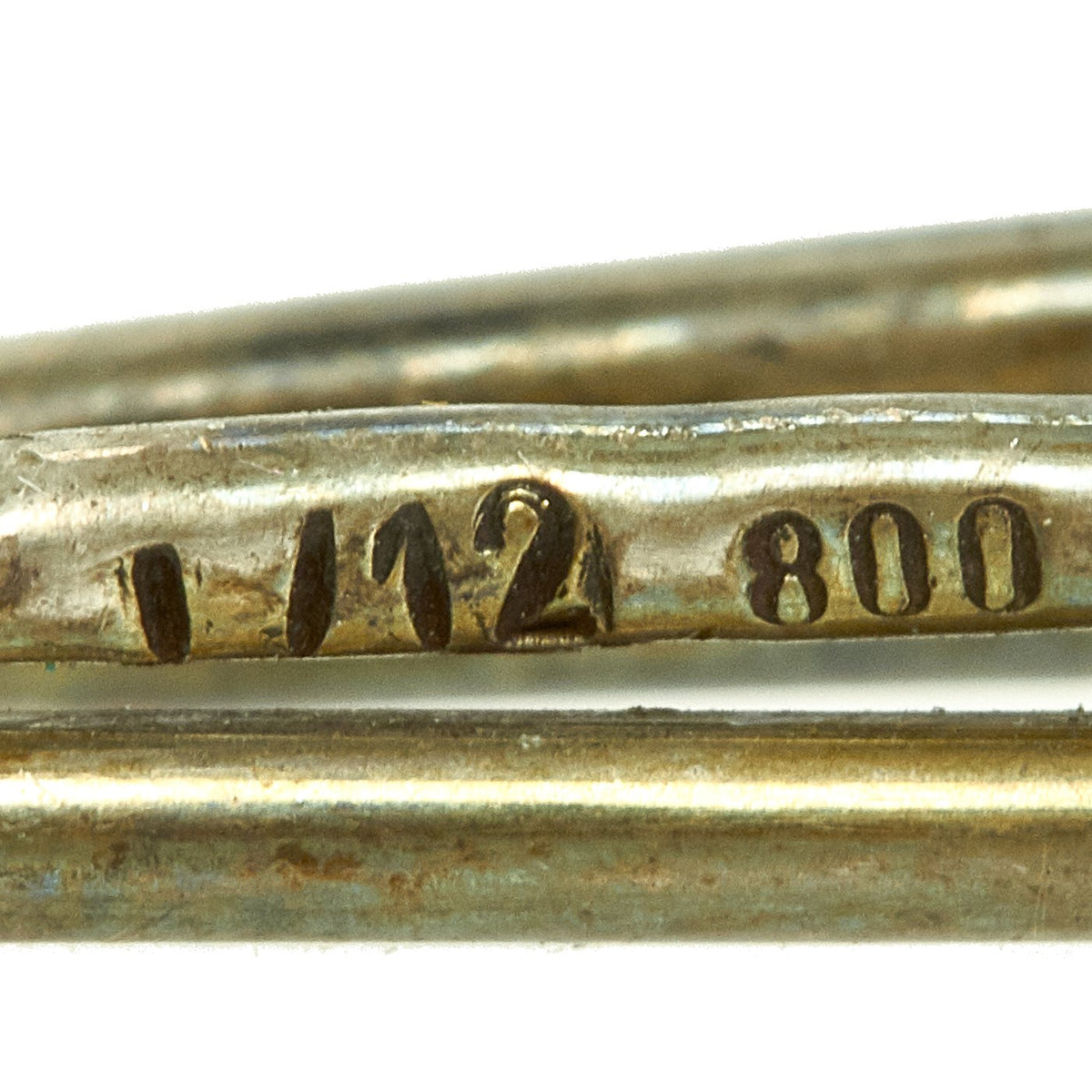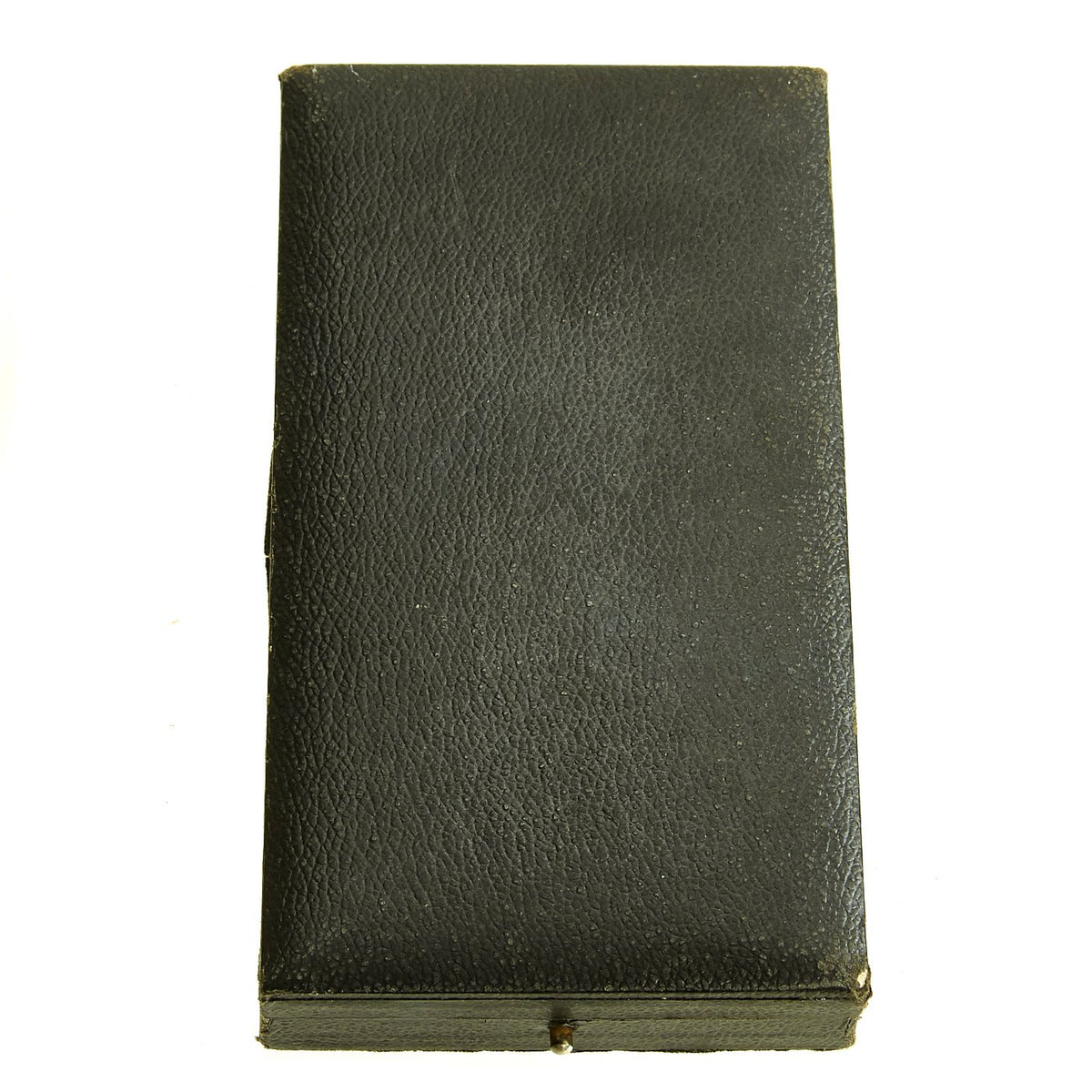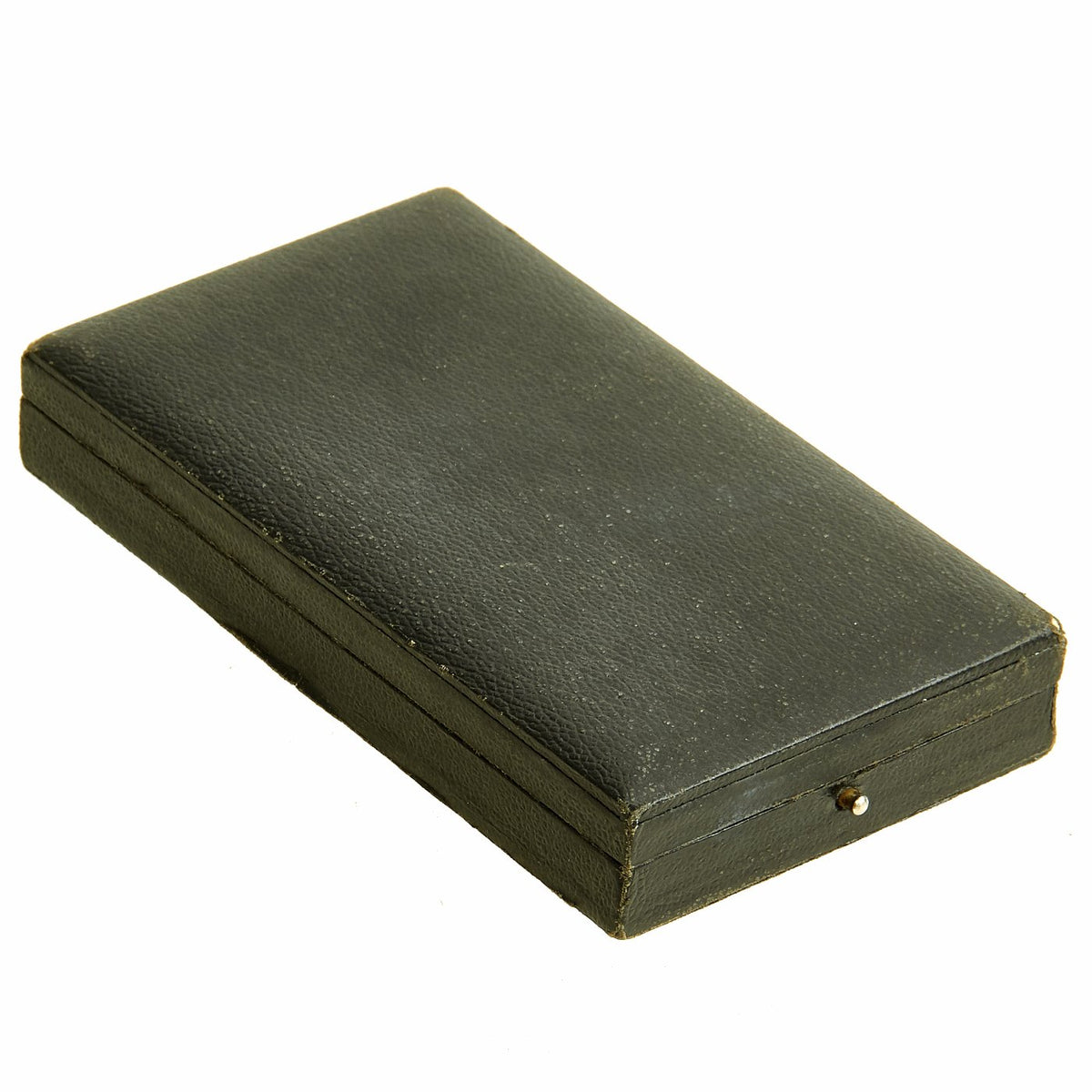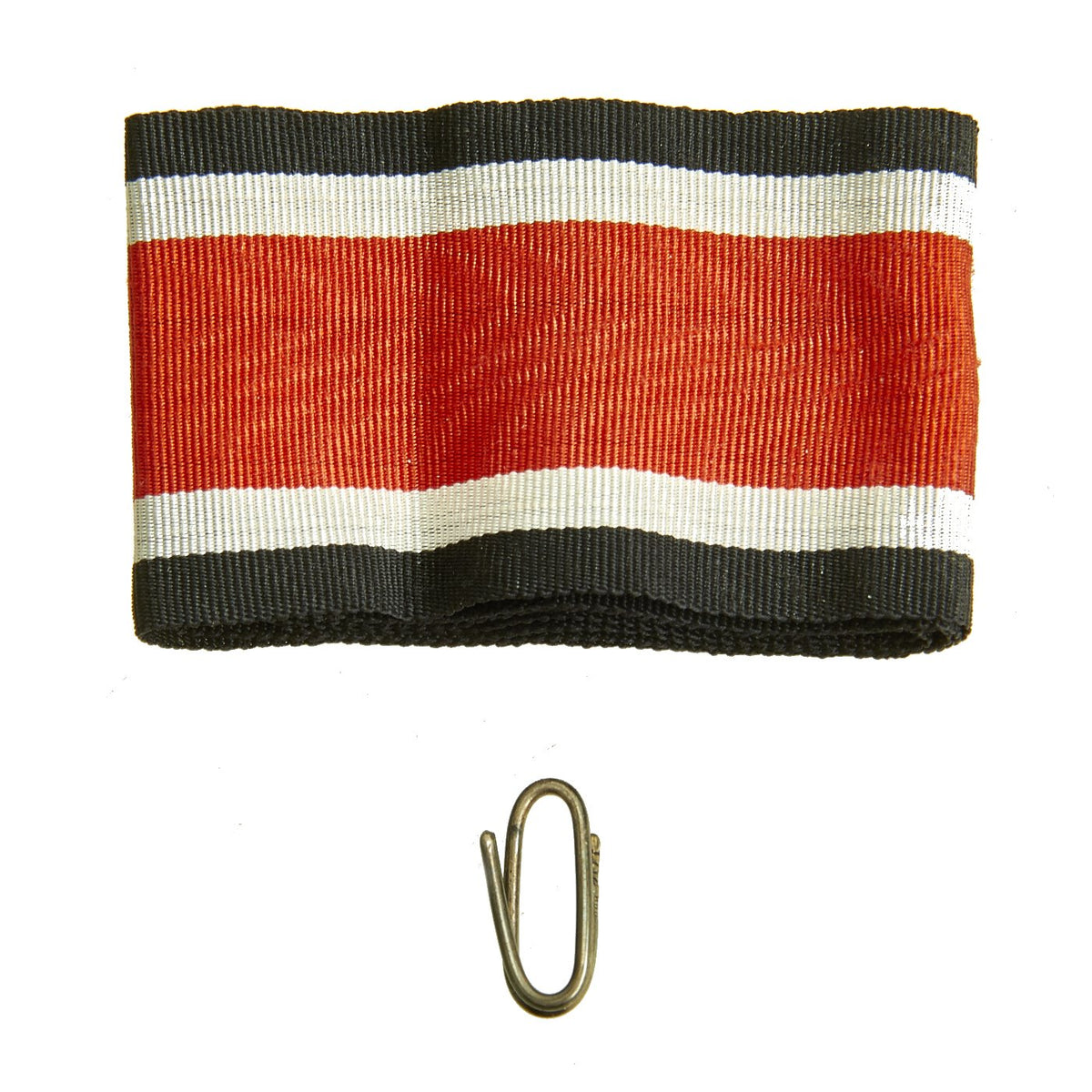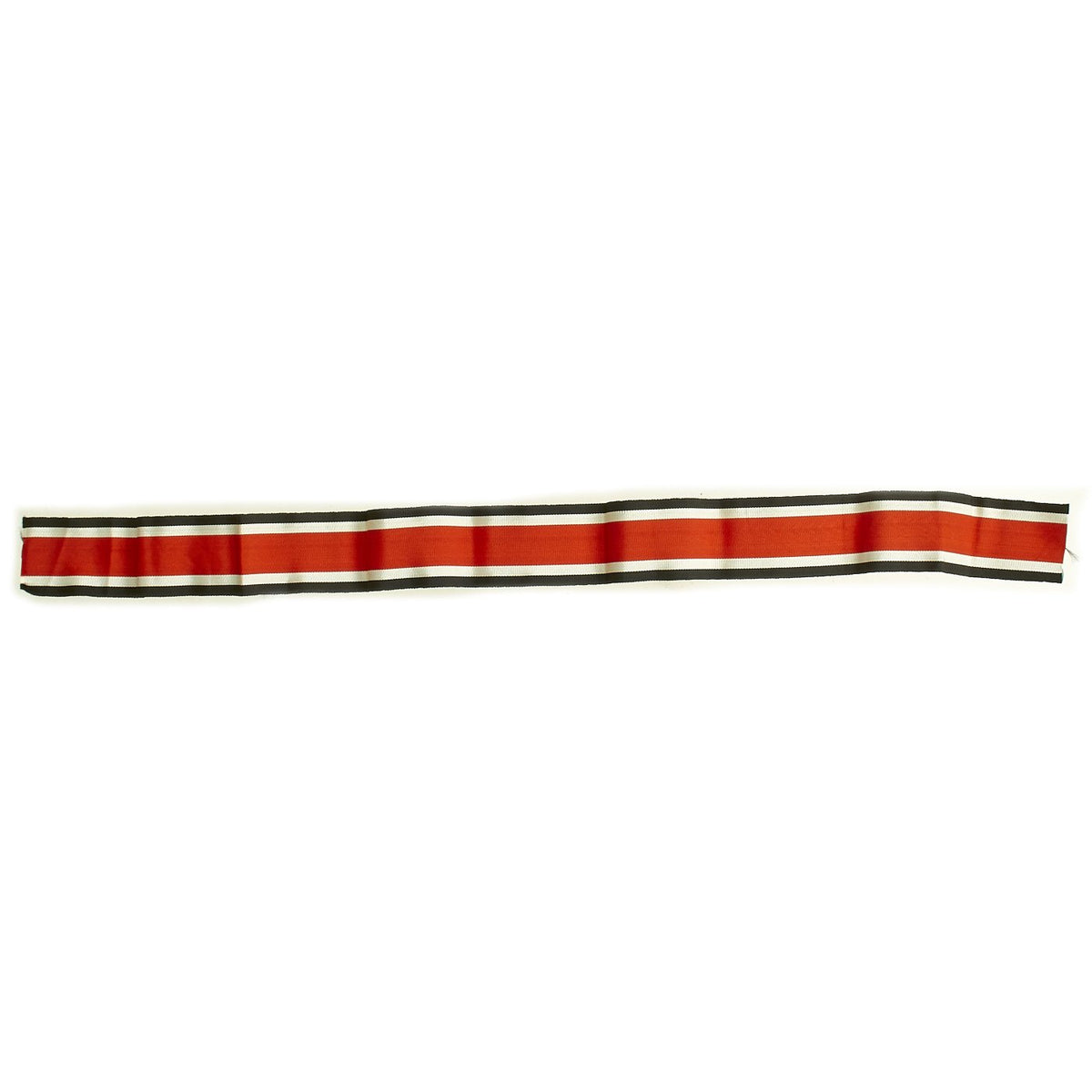Original German WWII Knight’s Cross of the Iron Cross Ring by C.E. Juncker with Ribbon in Post War Case – Ritterkreuz Original Items
$ 525,00 $ 157,50
Original Items: Only One Available. The German WWII ‘Knights Cross’ is one of the most iconic awards, seen in many pictures and movies around the necks of recipients. Most well-decorated command officers were not really considered notable until they had been received one for a successful campaign during WWII. What we have here is an original hanger ring and ribbon, which were used to secure the cross around the neck. These are contained in a post war case, which is correctly inlet for the award, ring, and ribbon.
The ring itself is maker marked with LDO number L/12 on the ring next to silver content number 800 (.800 Silver or 80%). This represents which represents legendary firm C.E. Junker of Berlin. The The LDO, (Leistungs Gemeinschaft der Deutscher Ordenshersteller – Administration of German orders Manufacturers), was a self-governing organization formed in 1941 which regulated the manufacturing of all German awards. The firm C.E. Junker was fully licensed in the organization, entry number 12.
The ring is in very good condition, with the expected light tarnish from years of age. The ribbon is also in very good shape, with vibrant colors, and minimal fraying or wear. The ribbon does not show any sign of having been used to hang a Ritterkreuz in the past, and is still folded.
The post war case is very nice, and has the correct inset for the Ritterkreuz, with the usual velvet bottom and satin lid lining. It still locks correctly, and has functional hinge.
Some very hard to find accessories for one of the most legendary of German WWII awards, ready to add to your collection! This would be perfect for a cross that has lost its original case and ribbon.
The Knight’s Cross of the Iron Cross (Ritterkreuz des Eisernen Kreuzes), or simply the Knight’s Cross (Ritterkreuz), and its variants were the highest awards in the military and paramilitary forces of NSDAP Germany during World War II.
The Knight’s Cross was awarded for a wide range of reasons and across all ranks, from a senior commander for skilled leadership of his troops in battle to a low-ranking soldier for a single act of military valor. Presentations were made to members of the three military branches of the Wehrmacht: the Heer (army), the Kriegsmarine (navy) and the Luftwaffe (air force), as well as the Waffen-SS, the Reichsarbeitsdienst (RAD—Reich Labor Service) and the Volkssturm (German national militia), along with personnel from other Axis powers.
The award was instituted on 1 September 1939, at the onset of the German invasion of Poland. A higher grade, the Oak Leaves to the Knight’s Cross, was instituted in 1940. In 1941, two higher grades of the Knight’s Cross with Oak Leaves were instituted: the Knight’s Cross with Oak Leaves and Swords and the Knight’s Cross with Oak Leaves, Swords and Diamonds. At the end of 1944 the final grade, the Knight’s Cross with Golden Oak Leaves, Swords and Diamonds, was created. Over 7,000 awards were made during the course of the war.
Aprox: 25.5″ L and 1 3/4″ W
Fast Shipping with Professional Packaging
Thanks to our longstanding association with UPS FedEx DHL, and other major international carriers, we are able to provide a range of shipping options. Our warehouse staff is expertly trained and will wrap your products according to our exact and precise specifications. Prior to shipping, your goods will be thoroughly examined and securely secured. We ship to thousands clients each day across multiple countries. This shows how we're dedicated to be the largest retailer on the internet. Warehouses and distribution centres can be located throughout Europe as well as the USA.
Note: Orders with more than one item will be assigned a processing date depending on the item.
Before shipping before shipping, we'll conduct a thorough inspection of the items you have ordered. Today, the majority of orders will be delivered within 48 hours. The delivery time will be between 3-7 days.
Returns
The stock is dynamic and we cannot completely manage it because multiple stakeholders are involved, including our factory and warehouse. So the actual stock may alter at any time. It's possible that you may not receive your order once the order has been made.
Our policy is valid for a period of 30 days. If you don't receive the product within 30 days, we are not able to issue a refund or an exchange.
You can only return an item if it is unused and in the same state as the day you received it. You must have the item in its original packaging.
Related products
Uncategorized
Band of Brothers ORIGINAL GERMAN WWII Le. F.H. 18 10.5cm ARTILLERY PIECE Original Items
Uncategorized
Uncategorized
Uncategorized
Uncategorized
Australian WWII Owen MK1 Machine Carbine SMG Custom Fabricated Replica with Sling Original Items
Uncategorized
Uncategorized
Uncategorized
Uncategorized
Uncategorized
Uncategorized
Armoured Fighting Vehicles of the World: AFVs of World War One (Hardcover Book) New Made Items
Uncategorized
Uncategorized
Uncategorized
Uncategorized
Uncategorized
Uncategorized
Uncategorized
Uncategorized
Uncategorized
